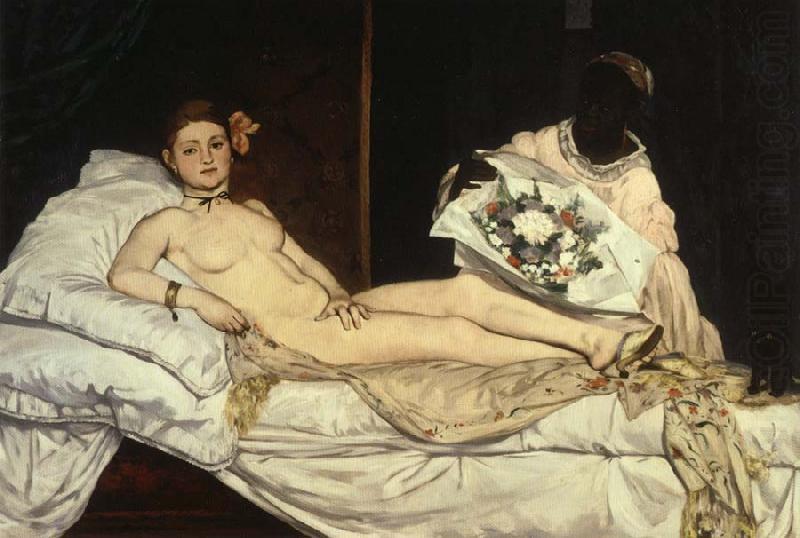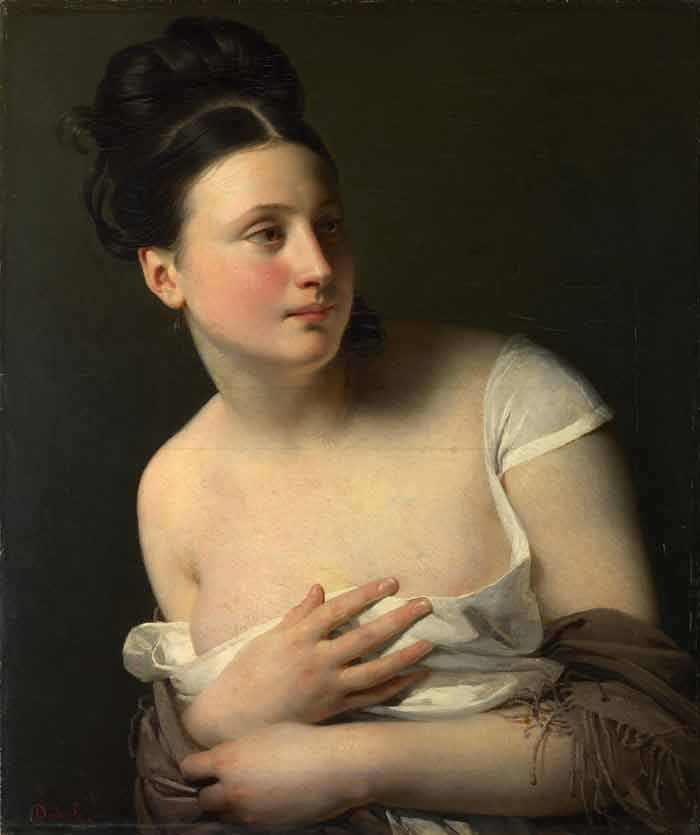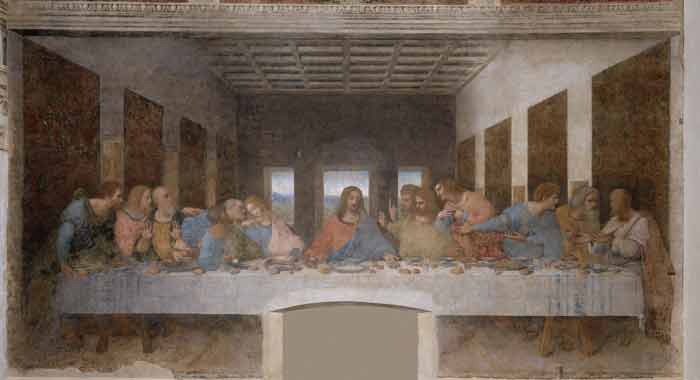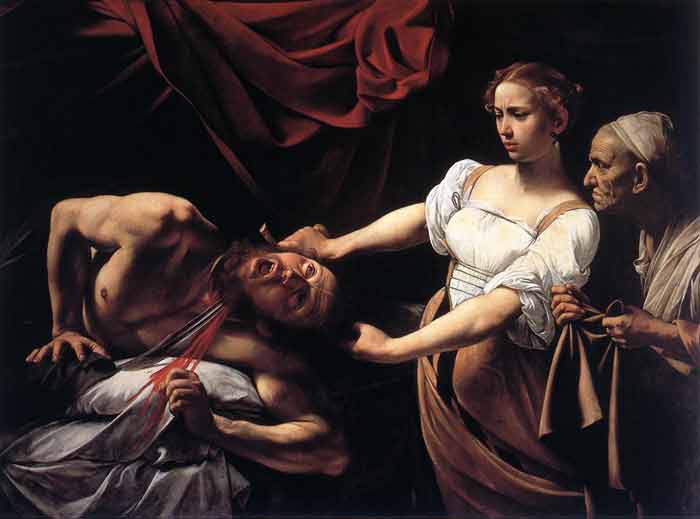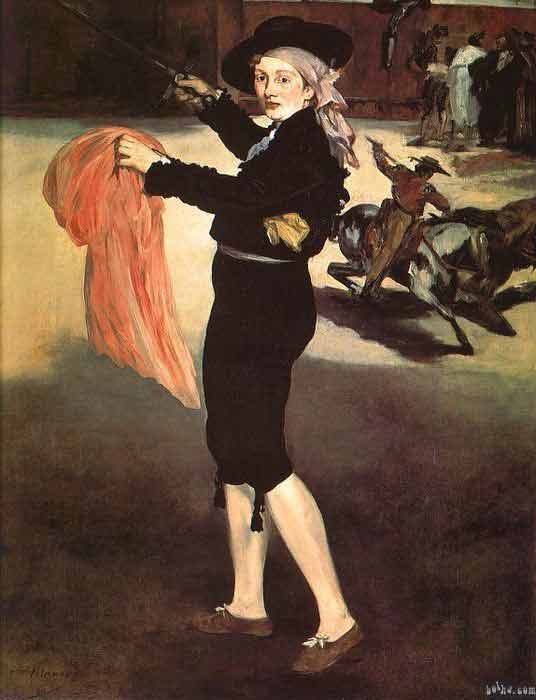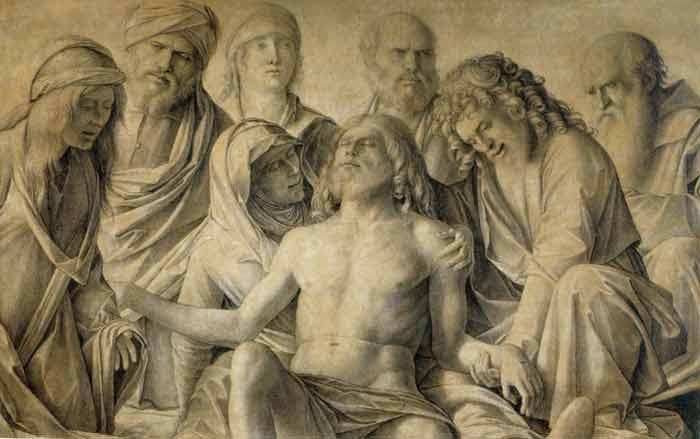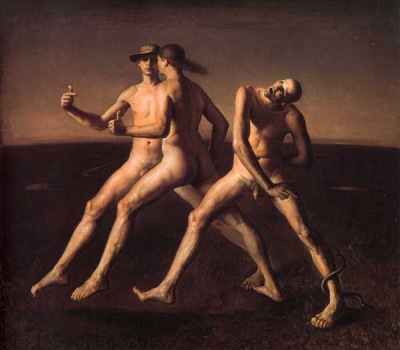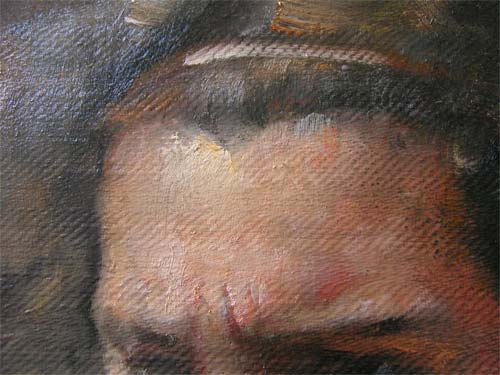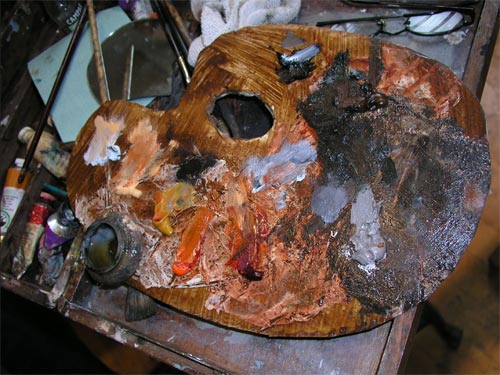On 30 May, 2011 With
Manet’s Oil Painting Technique Manet’s exploration of the visual and pictorial implications of a simplified tonal scheme culminated in the assurance with which he handled the nude in Olympia (1863). It is worth quoting Hamilton at some length for his assessment of the technique used in this painting and the public response to this painting. “In the Olympia the technical and conceptual experiments of the earlier years finally found a coherent and complete expression. The restricted colour range of the Bullfight, the full frontal lighting of the Dead Christ, the contemporary subject devoid of any moralizing or romantic idealization which he had sought but never achieved in the Spanish themes and which had been compromised in the Dejeuner sur l’Herbe…
Read More
On 25 May, 2011 With
Manet’s Oil Painting Technique Manet differed from Couture on one very significant technical issue. Whereas his master taught the careful analysis and rendering of midtones, Manet believed that light presents itself so forcefully to the eye that it should be depicted by simplified tones in order to retain its immediacy. In reducing midtones and concentrating on simple areas of dark and light, Manet flattened the picture plane, because he negated illusionism, which was achieved by subtle transitions. His interpretation of the effects of light on the perception of objects was doubtless enhanced by photographic evidence. The camera provided proof of the translation of’ three-dimensional information into two-dimensional information; it became obvious that form could be represented by a reduced tonal…
Read More
On 12 May, 2011 With
Leonardo da Vinci’s Oil Painting Technique – How to paint like the Old Masters. The Last Supper (Italian: Il Cenacolo or L’Ultima Cena) is a 15th century mural painting in Milan created by Leonardo da Vinci for his patron Duke Ludovico Sforza and his duchess Beatrice d’Este. It represents the scene of The Last Supper from the final days of Jesus as narrated in the Gospel of John 13:21, when Jesus announces that one of his Twelve Apostles would betray him. Leonardo da Vinci’s Oil Painting Technique: Leonardo da Vinci painted The Last Supper on a dry wall rather than on wet plaster, so it is not a true fresco. Because a fresco cannot be modified as the artist works,…
Read More
On 10 May, 2011 With
Caravaggio’s Oil Painting Technique Carravgio for the most part painted alla prima without any prepatory drawings or cartoons directly onto the canvas. The evidence for this is that over time the underpaintings have become more visable and show how he changed his mind and “searched” for him composition. He used a very limited pallet. David Hockney’s theory on masters using primitive projectors, pointed to Caravaggio’s marks on the wall (in “Judith Beheading Holofernes”) as proof to this for some reason. Its important to know that Hockney is the “conspiracy nut” of the art world who sees logic where there is none and speaks absurdly. Other than that, I have not come across anything as to why there are scratches in…
Read More
On 5 May, 2011 With
Manet’s Oil Painting Technique Manet’s Oil Painting Technique technique was not, in fact, radically innovative, but the context in which it was presented challenged established tradition. Manet responded to Couture’s attitude to rapid execution and to the ebauche, because it permitted an immediate response to the idea, the image growing under the brush and the immediate rendering of a moment of contemporary life. Whereas Couture would present in public only “finished” paintings, in which the initial statement had been modified, Manet. was prepared to regard ebauche methods as yielding the finished statement. Thus, although he manipulated his paint surface, each layer was executed in alla-prima technique, and retained a fluid and personalised painterly appearance. Manet favoured the use of opaque…
Read More
On 14 Feb, 2011 With
Painting Techniques – Working in layers Oil Painting Working in layers is used extensively in oil painting for paintings that require more than one session. For a painting that develops over several days, allowing for the oil paint to dry for a given layer, it is helpful to work with explicit painting layers. The first layer may be a ground, usually applied all over the surface. Then an underdrawing in outline may follow. Then comes underpainting, overpainting, and finally semi-transparent glazes and varnish. All of these layers will affect the appearance of the final painting. To understand the role of underpainting, one can use metaphor and think of the underpainting as a base-rhythm in music, and the overpainting as a…
Read More
On 18 Nov, 2010 With
Previous articles about Odd Nerdrum’s Oil Painting Methods: Part 1 Part2 OTHER PAINTING METHODS of ODD Nerdrum He started with a rough outline of the head and went straight to painting shadows, no hard edges in the beginning. During a break on the first day, he used a fan brush to soften the entire face. He turned the painting upside down a couple of times to see where the problem lies. At the beginning of the second day, before starting to paint, he applied a thin layer of linseed oil on the whole surface with the rag (oiling out) he then added green umber to the rag and applied that on the background. (no extra oil, except for the little…
Read More
On 12 Nov, 2010 With
Click here to download The Must-have Guide for Successful Fine Artist This Book can give You only two things: FAME and WEALTH Odd Nerdrum Preparation (his student demoed it in class): size the canvas with rabbit skin glue. (PVA glue can be used as a substitute). Priming the canvas: Materials -Framer’s Whiting (ground chalk) -Linseed Oil?-Galkyd (just a little bit, to speed up drying time) -Turpentine (just a litte bit; and do not use OMS) mix with a thick long palette knife until the mix is the consistency of toothpaste. (it was more like pancake batter) add white and English Red (or transparent oxide red) so that the final mix is a pinkish brick color. Make sure the canvas is…
Read More
On 10 Nov, 2010 With
Odd Nerdrum uses a small (less than 12″ on the longest side) homemade oval shaped palette cut out from foamcore. It is tinted brown. COLORS on the palette: (Old Holland brand) -Titanium White w/ a tint of Old Holland Blue (which he pre-mixed into a tube) -Briliant Yellow Light -Yellow Brown -Madder (Crimson) Lake Deep Extra -Brown Ochre (Deep?) -Green Umber?-Warm Grey (which he pre-mixed from Ti White/ Brown Ochre/ Green Umber) -Mars Black (warmer and less harsh than Ivory Black) -Scheveningen Orange? (I think that’s what he used. but I was surprised because I thought this color is fugitive)
Read More
On 18 May, 2010 With
Art with spray paint is an new urban art form that utilizes spray paint as its medium. It is an art form that often depicts science fiction scenes or fantasy environments; the art relies highly on random effects produced by the spray paints. It is similar to graffiti in the fact that it incorporates the use of aerosol paints, but it also differs in the fact that the art is painted on more traditional art surfaces like poster board rather than walls or trains. Also it is often painted for commercial purposes. Usually a glossy white poster board is used as a painting surface, though; almost any flat surface can be used. The artist will usually perform in a well…
Read More


